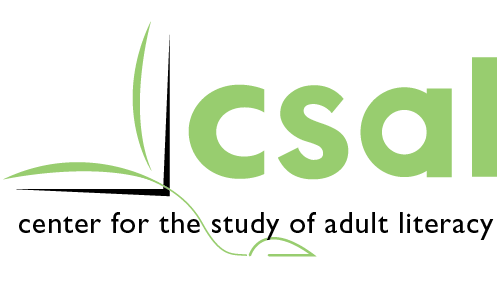Year Seven Summary
Every year, nearly 3 million Americans enroll in adult literacy programs to improve their basic skills and some estimates suggest that the need is even greater. Adults in these programs want to increase their literacy skills to improve aspects of their work, family, social, and civic lives. However, we do not completely understand their underlying reading-related strengths and weaknesses, nor do we know the best curricula and teaching approaches to help them reach their reading goals. The focus of our center is to address these areas by attending to the following goals: 1) To collect data on the underlying cognitive and motivational processes that contribute to or impede the reading development of adults who read between the 3.0 and 7.9 grade equivalency levels; 2) To develop and evaluate a multiple component reading intervention for adults who read between the 3.0 and 7.9 grade equivalency levels; 3) To design and collect data from supplemental studies that are aligned with the overall goals of CSAL and are relevant to significant issues in adult education; 4) To engage in national leadership activities that serve the needs of adult education researchers, policymakers, practitioners, and stakeholders; and 5) To disseminate findings of this work.
This report describes our activities from June 1, 2018 through May 31, 2019 in the following areas: a) Data analyses, b) Intervention curriculum revisions, c) Professional development, d) Dissemination of findings, e) Conducting supplemental and additional studies, and f) Performing other Center activities.
Data were collected on 37 different measures on 544 people. Their performance on our extensive test battery indicates that they are deficient in all tested domains. Their mean grade equivalency performance ranges from a low of 1.0 GE (Blending Words and Phoneme Isolation subtests of the CTOPP) to a high of 6.7 GE on sight word reading (TIWRE). We have conducted analyses on our participants’ responses to these tests and found that while the tests were structurally valid, there was substantial variability across tests and even within some tests. A few of the tests showed low sensitivity, variability in sensitivity, and spikes in difficulty.
During the past year, we continued to refine our multiple component reading intervention materials. We have also conducted analyses on our intervention outcomes, With the exception of the TABE findings, our findings suggest that our intervention exerted its greatest impact on adult learners’ decoding skills. This indicates that it is not too late to work on basic foundational skills in adulthood, and points to the critical importance of including systematic decoding instruction in adult literacy programs.
During this past year, we continued all of our regular national leadership and dissemination activities. We developed Adult PHAST PACES professional development workshop presentation slides and accompanying materials, and we conducted four professional development workshops (two in adult literacy programs and two in conferences). In addition, our research teachers are completing a manuscript that describes their experience teaching Adult PHAST PACES.
Examples of other center activities described in this report include supplemental studies, maintenance of an email distribution list, and conference presentations.
